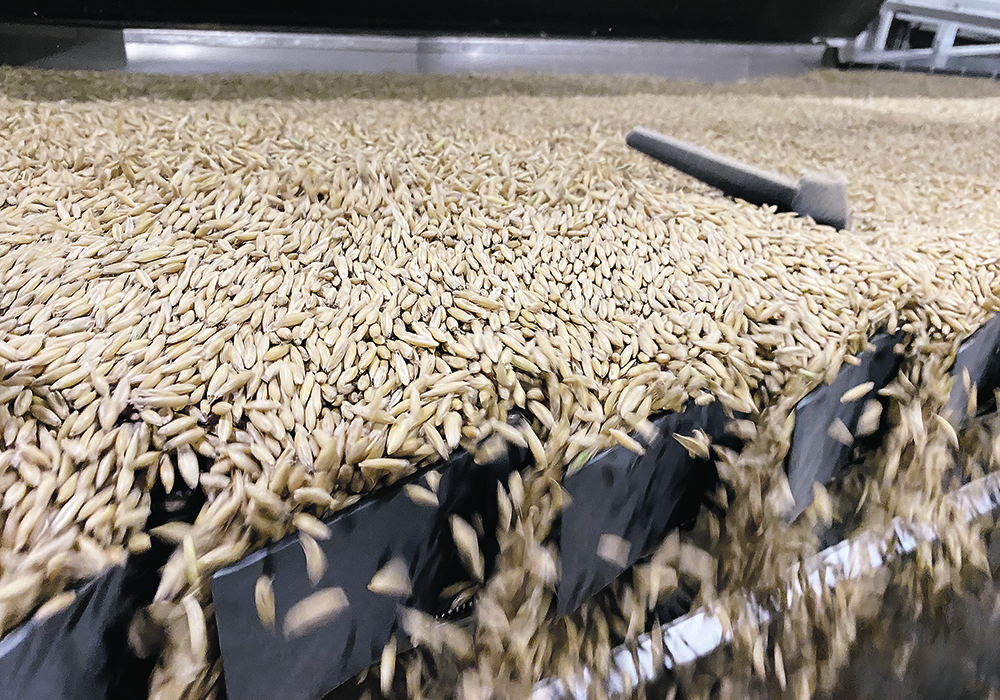Here’s a line you could hear from any grain trader dealing with agricultural statistics, government reports or murky public or private markets and still trying to trade on them: “This is the best data we’ve got. It’s not very good, but it’s the best we’ve got.”
I’ve heard that dozens of times over the years following Statistics Canada reports, Agriculture Canada predictions, U.S. Department of Agriculture releases and market data from Chicago, Kansas City, Minneapolis and of course our own Winnipeg market.
Read Also

Russian wheat exports start to pick up the pace
Russia has had a slow start for its 2025-26 wheat export program, but the pace is starting to pick up and that is a bearish factor for prices.
But this line was uttered a few days ago by Edd Straw, a British Formula One auto-racing journalist discussing the abbreviated testing period for the world’s most expensive sports cars, which are getting ready for a new season of globe-spanning competition.
The topic came up the next day when Straw had to provide disclaimers when discussing testing with another F1 journalist.
“Every year we try to learn all we can from testing, but it is of course difficult. But however unsatisfactory the data is, it is all we have until the season actually starts,” said Straw.
Mark Hughes replied: “You can only go on the numbers that you’ve got, really, with a little bit of background info.”
For F1, this is not only OK because it’s just a sport, but the lack of knowledge about the cars is actually a deliberate choice, to not only add drama for fans but to also introduce a wild card factor for the teams.
For farmers, having poor, incomplete and inaccurate information about the markets in which their crops are bought and sold, and from which prices arise, is potentially impoverishing.
It’s not just a matter of farmers getting weaker prices or having to make decisions in an unnecessarily opaque environment. It also imperils the future of some of the crops that Western Canada relies upon.
Take oats. Oats is a premium food product with hot demand from consumers ravenous for oat milk, oat bars, and breakfast cereals in a time of high inflation. But it’s priced like it’s a feed crop, mostly valued for its nutritional value for horses, cattle and pigs.
Farmers can get contract prices from millers, but those are risky and don’t substitute for having accurate free market prices that reflect the main value for the crop.
As Randy Strychar pointed out at Winnipeg’s CropConnect conference, the Chicago oat futures contract is sadly deficient in pricing the real-world value of milling oats, yet it’s what sets the base price for the crop in the commercial industry.
They’re bad numbers, but they’re the only numbers we’ve got.
Strychar thinks that needs to change because farmers need to see the value of their crop or they won’t bother taking oats seriously. Acreage and quality will suffer if oats look less attractive than crops like canola and wheat.
A version of this applies to malting barley, which has long been plagued by its prices being based on feed values and malting contracts frequently becoming impossible to deliver against, due to quality or other selection complications. That’s made the malting barley community a hard-core village of dedicated farmers who try to knock the quality ball out of the park every year, but it’s made most farmers ignore the crop’s potential.
Peter Watts of the Canadian Malt Barley Technical Centre laid out exciting new varieties and market possibilities for farmers at CropConnect, but he knew he was facing an audience of growers who also have the choice to plant wheat. Wheat’s easy to grow, easy to market and when it has nice prices, it’s a challenge to entice farmers to roll the dice on growing a malt barley crop.
How about fertilizer? That’s a dreadfully opaque market. The numbers for that are pretty dodgy, even for the companies dealing in fertilizer.
John Daniels, the fertilizer manager for Paterson GlobalFoods, sketched out the complexities for farmers attending St Jean Farm Days in January.
It’s a cash market. There aren’t futures. Most prices are based out of supplies trading through the port of New Orleans, Louisiana.
Those have to be backed off for Western Canada, taking into account transportation and other costs between New Orleans and the Prairies, including Mississippi barge, Midwest rail and trucking situations.
Apparently a key market information source is the Green Markets newsletter from Bloomberg News.
That’s an opaque market, by any definition. It’s also a market that sets the price for the biggest input cost every farmer faces.
It can be a lot of fun grappling with information deficits. That’s what mystery stories are all about. There wouldn’t be much fun in a whodunit if we knew from page one who the murderer was.
Formula One auto racing’s deliberately abbreviated testing season makes the early races more exciting because unexpected problems — blown engines, broken gearboxes, shredded tires — create drama that upends expectations.
But farmers don’t need more drama and suspense in their lives.
More clarity on the true value of both inputs and crops would give farmers a better chance at making good decisions and making their lives more pleasantly dull and undramatic.
















